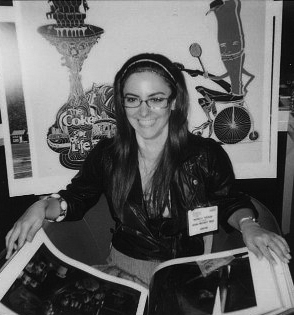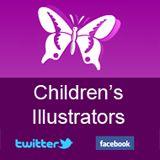What path led you to your current position at OUP?
I’ve had a lot of jobs before coming to OUP! In terms of my education though I was interested in a whole range of creative disciplines such as photography, art and theatre. After my Art Foundation I still couldn’t decide what I wanted to specialise in. I chose a degree in Media Arts and Video Production as the course brought together many of the subjects I was interested in. After University my first proper job was working for D&AD on their student and professional awards. It was a great opportunity to see leading industry work and sit in on the judging sessions. After this I did a stint as a runner working for production companies in Soho and on short films.
I absolutely loved it but the work was mainly freelance and poorly paid so I eventually had to get full time work. I started work in the design studio of a small publishers working on film magazines and then got the job at OUP – it was a great opportunity. Not only do I get to commission illustration but I can use my background in photography and film for organising and art directing photo shoots for the in-book photography.
Describe the role and responsibility of a Senior Art Editor at the largest University Press in the world. What does a typical day involve?
The job is so varied it’s really difficult to describe an average day. It nearly always starts the same way though – with a coffee and checking emails. Then I’d usually be off to a project team meeting where the whole team get together to update on the developments of a particular project.
Looking for illustrators is a big part of my job so I spend a lot of time looking through portfolios, source books and websites. Along with going to shows and meeting with agents and illustrators. On another day I could be presenting these illustrators to my teams. My job also requires that I do picture research and photo shoots. So I could be out at a casting, sourcing props or looking at locations. The locations we use can range from studio shoots to Madame Tussauds and the London Eye.
In short it’s my responsibility to source and the visual material that appears in our books. The job is very team based though and I work closely with a great group of editors and designers in making decisions.
What impact has the growth and evolution of schools’ publishing had on OUP and on your role specifically?
For OUP the growth has meant expansion into new markets such as the Middle East. We have a heavy presence in a lot of countries and look to expand into the countries where we don’t. This requires people like me to find styles that appeal to those particular markets. We also have to be culturally sensitive in how the briefs are interpreted by illustrators. There is a huge demand now for digital publishing too so anything we produce has to work across a range of formats, no longer just print. It’s meant we’ve really had to focus on expanding our products in these areas. Our publishing plans over the next few years are very busy!
‘Pipi Longstocking’, a true children’s classic has recently been given a modern makeover by Lauren Childs. Describe the process of modernising old favourites.
This book is absolutely lovely – I would have loved to work on it. The educational trade division of the Press – OXED, produced it. The English Language Teaching division, which I work in, also produce modern classics including our Classic Tales and Oxford Readers lists. The first step is to decide on what type of updated artwork style or look to go for. The choice is vast and it’s really important to pick an illustrator that can stay true to the heart of the story whilst bringing something totally new to the feel of the classic. I also think it’s important that the illustrator really connects with the story.
Which books really stand out from your own childhood?
It’s got to be The Velveteen Rabbit, illustrated by William Nicholson, written by Margery Williams and Where the Wild Things Are, written and illustrated by Maurice Sendak. Both of these stories are just superb and the artwork in each is magical and wonderfully quirky. The illustration styles interpret these very different stories perfectly.
Talk us through one of your most memorable projects.
The project I’ve just completed has been pretty memorable… when the printed books landed on my desk I couldn’t believe we’d finally published it as there had been several set backs during the process. It’s a six level ELT course, aimed at the Spanish primary school market. I can’t mention the title as it’s not in the market yet! It’s packed with material and for me this meant I was able to commission and work with lots of great illustrators. It was a great chance to use some quirky illustration styles such as Tom Percival (Advocate), Lorena Alvares (Blue Fly Art) and Andrés Martinez Ricci (The Organisation), as the market tastes are much more daring in Spain. The books also features lots of photography and a DVD, this involved big location shoots from castles to sea life centres. Also what really makes a project is the team you’re working with in house and all the freelancers. A lot of people are involved in the making of an ELT course book.
Who or what has had the biggest impact on you from a creative point of view?
It’s so difficult to pinpoint just a single element or influence. I’m inspired by a whole array of things such as fashion, advertising, film and art. Way too many too mention! The art director Tibor Kalman had a big influence on me, especially as a teen. I used to have the pages of Colours magazine all over my bedroom wall. He was one of the founders and the editor-in-chief of the magazine. He drew on illustration, photography and typography all as design for communication.
What do you find most challenging about your job?
Keeping projects on schedule – particularly illustrator deadlines! Sometimes I’ll have up to 15 illustrators working on a job so it can be tricky keeping everyone on track. Also mediating between the in house team and the freelance illustrators. As our books are used to teach English and the lists I work on are aimed at young children, the artwork has to be very clear and unambiguous. The illustrators that work on ELT material do a great job, the briefs can be rather tricky and specific, with lots of correction requests made at rough artwork – but hopefully they enjoy it and still find room for their own creative interpretation of the job.
Which illustrator has been you ‘greatest find’, and what made their work stand out from the crowd.
Andy Hunt, who has a cartoony, lively style. His characters are lovely… they really embody personality, fun and movement. He also has a perfect style for the Italian market that we produce a lot of material for. They like illustration that is cute and safe at the same time as being modern and fun. I first came across Andy’s work when putting together samples for my first artist selection meeting. I still hadn’t really found who I thought was the right person for the job. When I first joined the Press (8 years ago) we were on the cusp on everything going digital so they still had huge filing cabinets full of hundreds of files containing paper samples of artwork. I was randomly pulling out files and pulled out Andy’s file. He ended up getting the job and over the years I’ve worked with him loads. Sometimes a lot of luck is involved in finding the right person.
If you could write a job description for the perfect illustrator, what key requirements would it include?
Someone that loves illustrating. I think you can really tell when an illustrator has enjoyed a job – it shows in the work. Also the ability to creatively interpret the art brief along with implementing feedback and hitting deadlines.
This interview has been syndicated courtesy of Childrensillustrators.com







